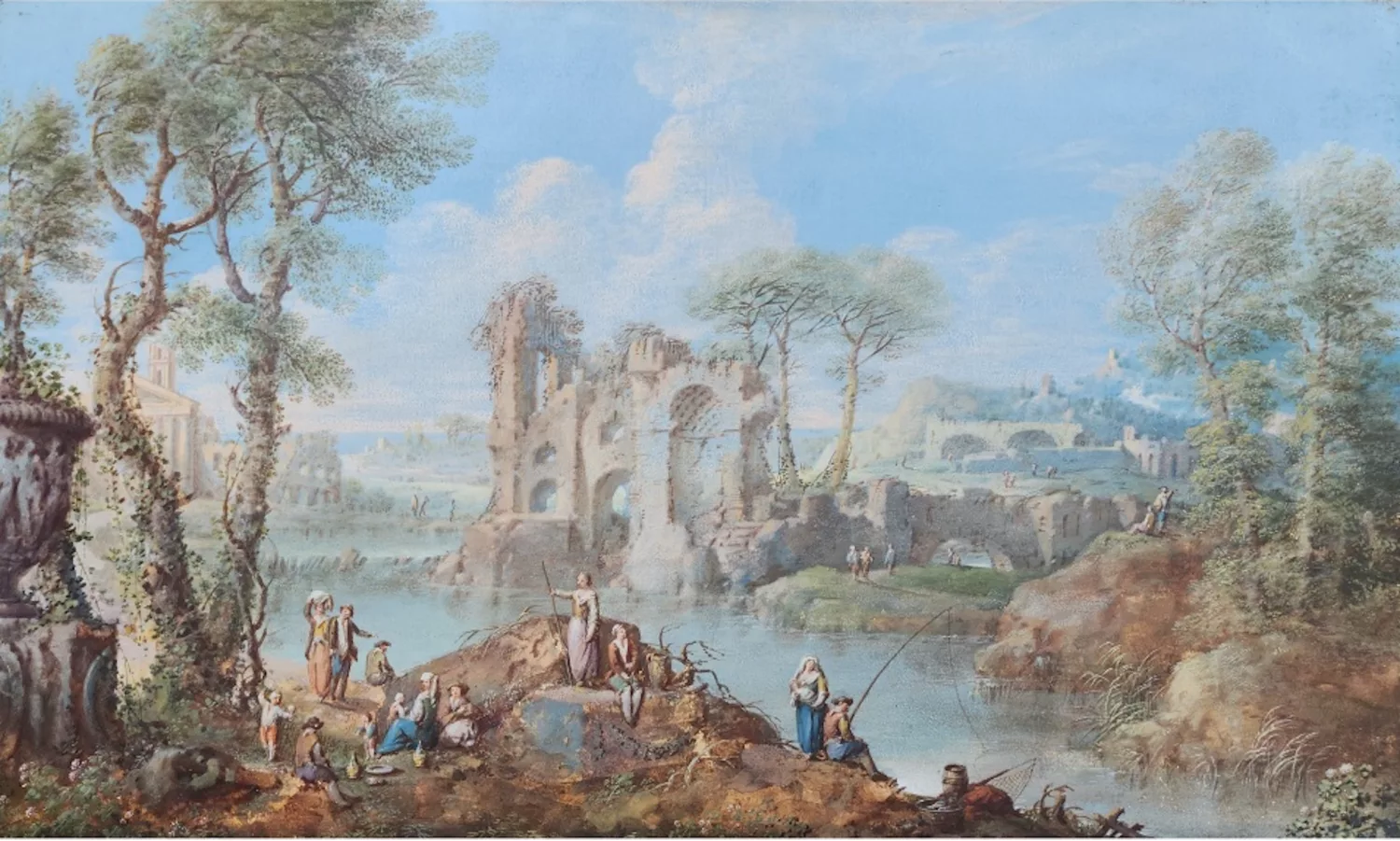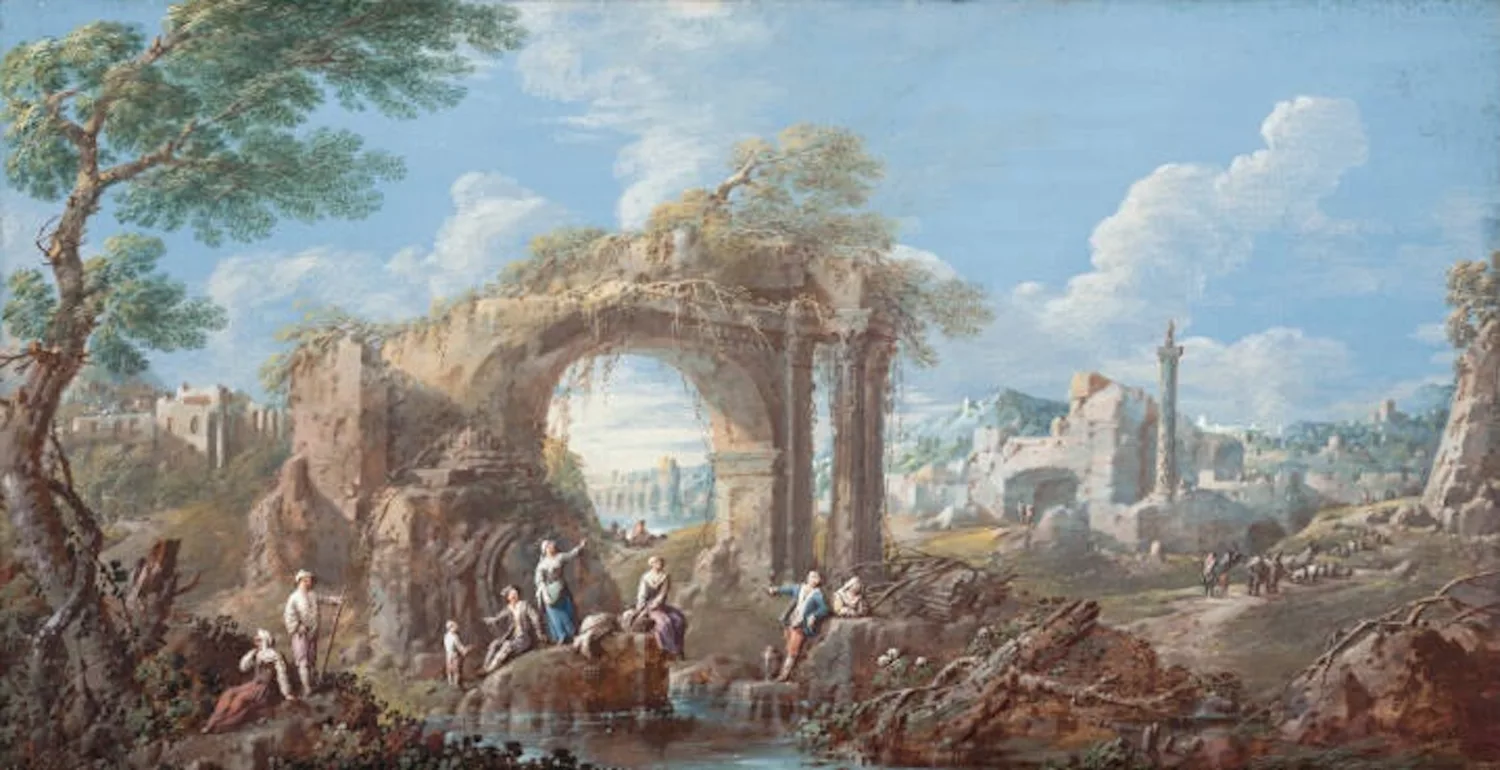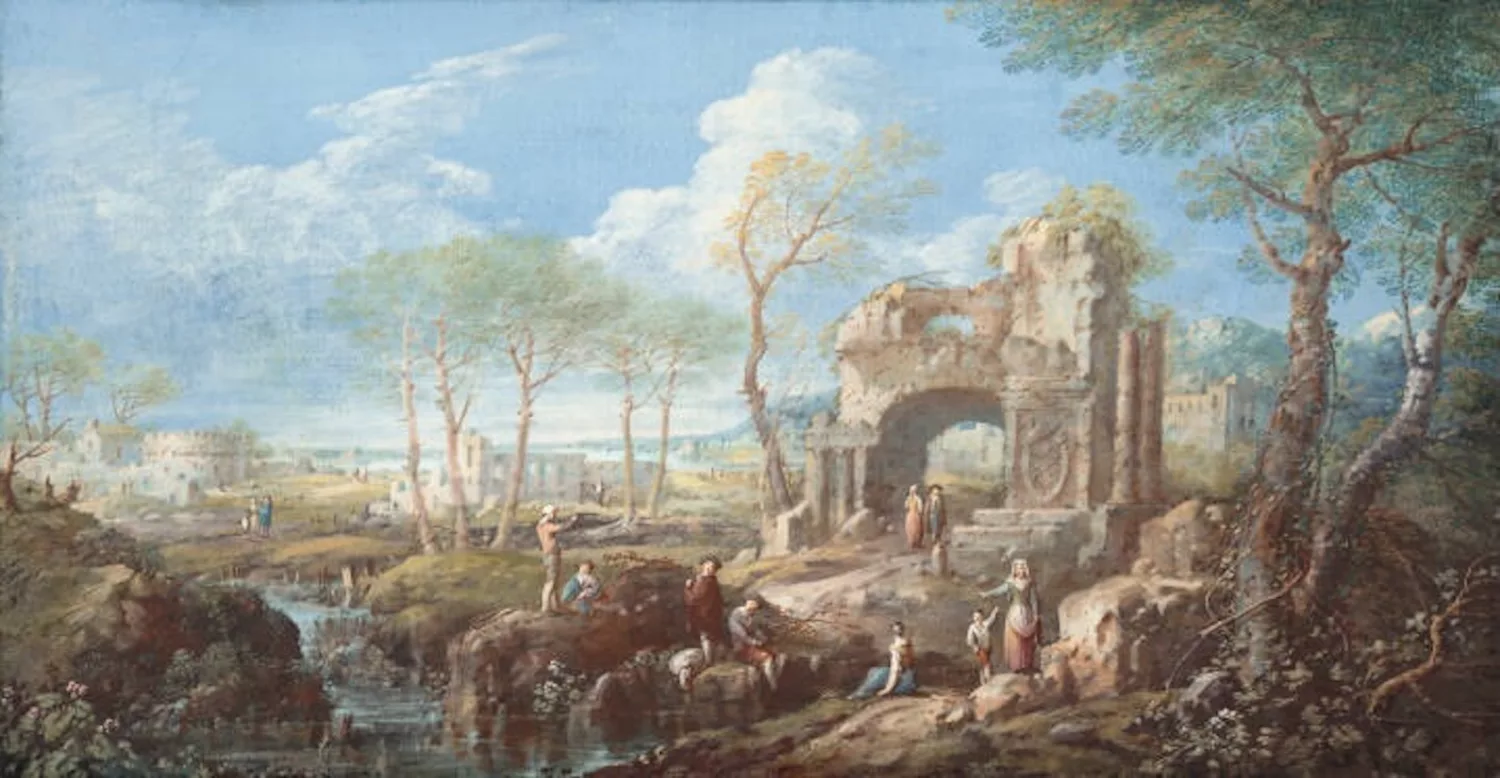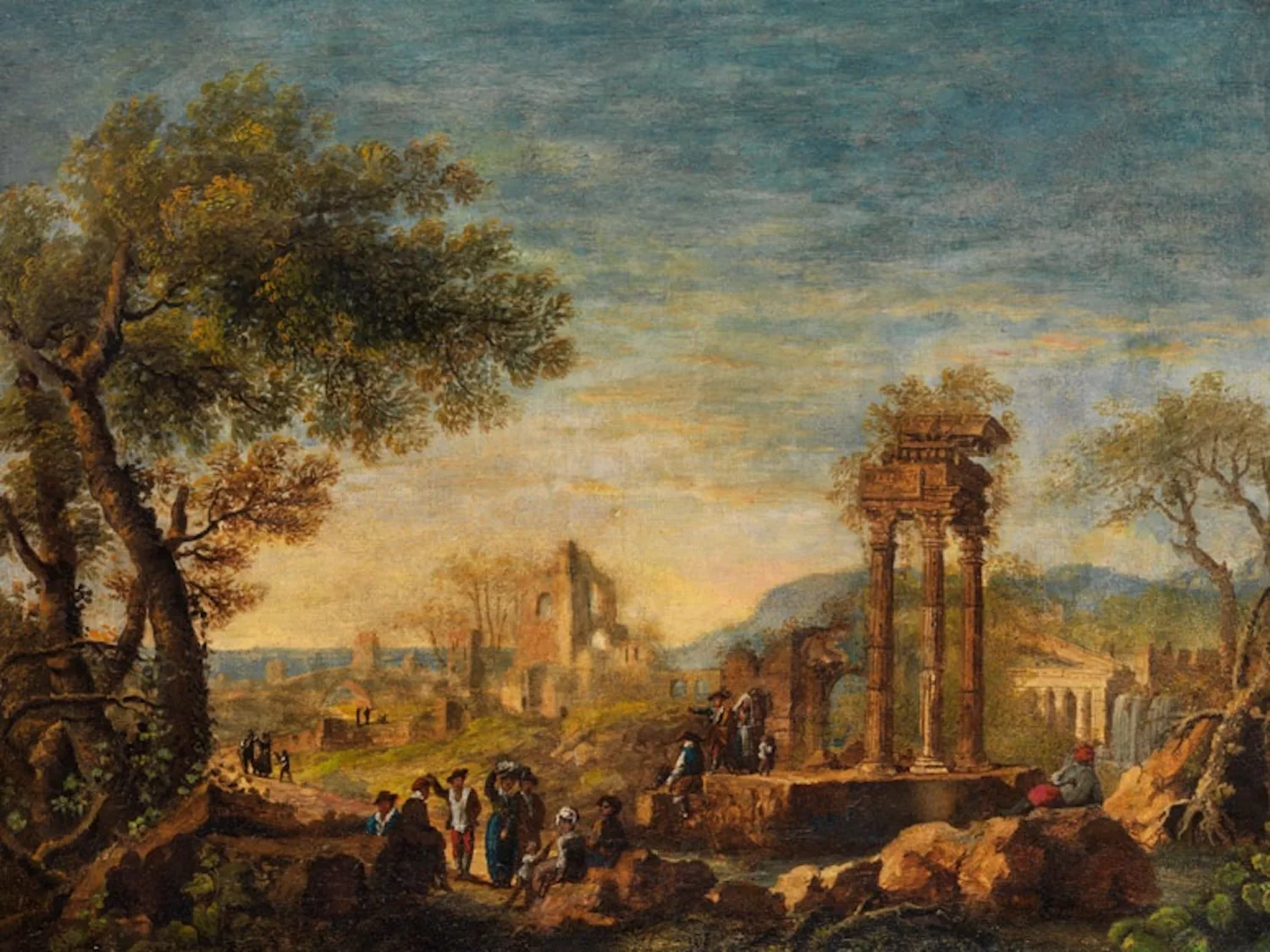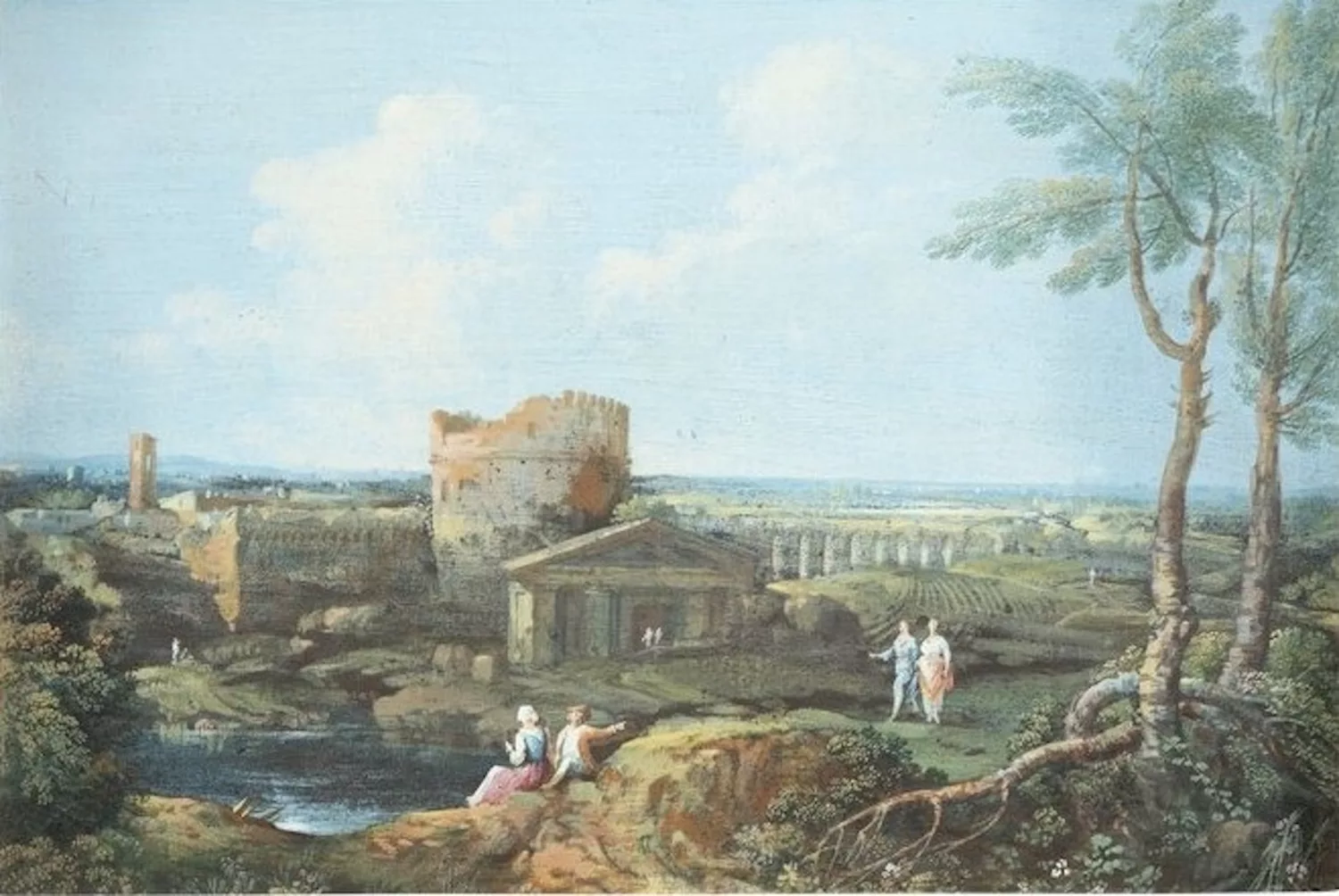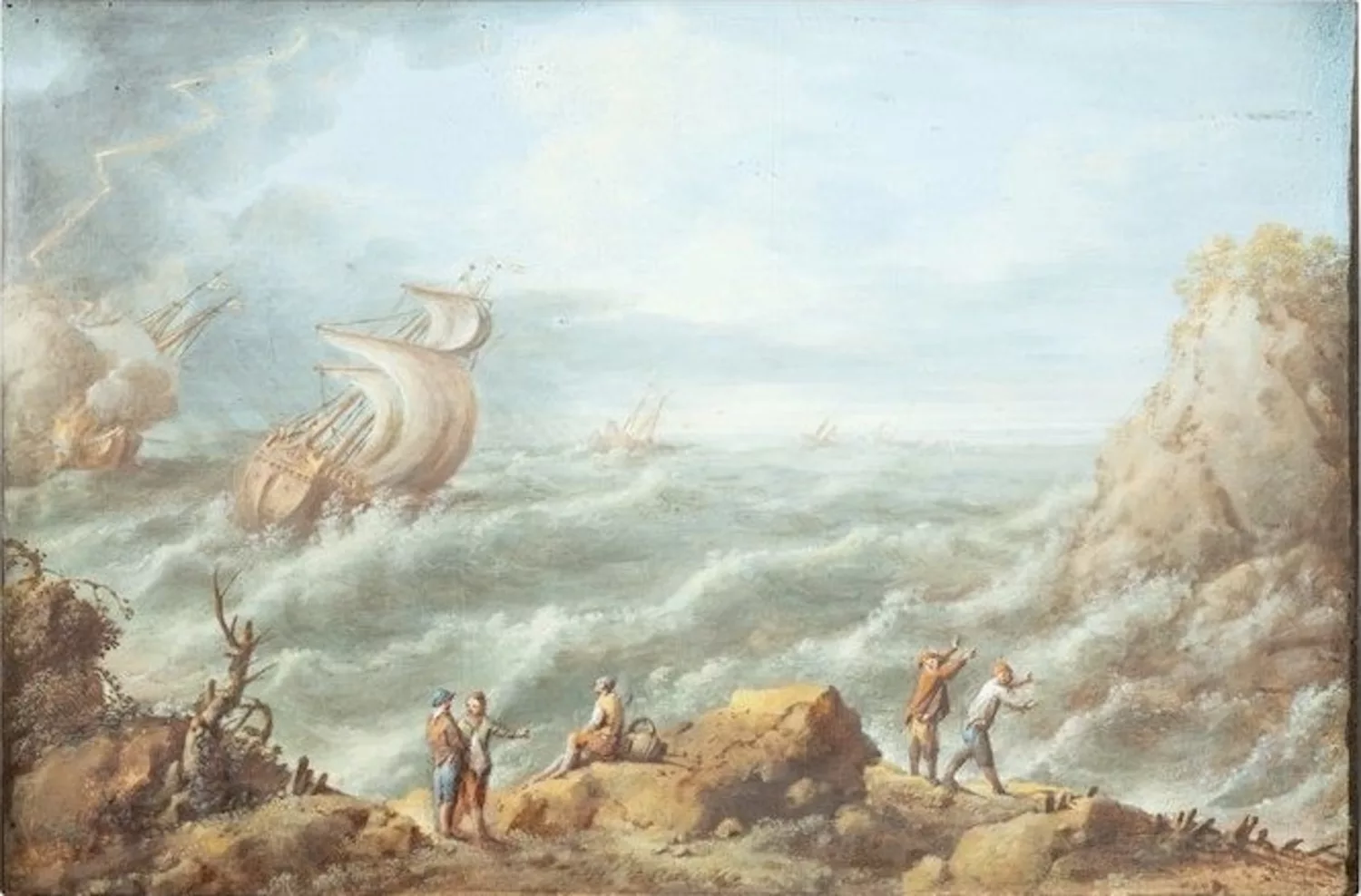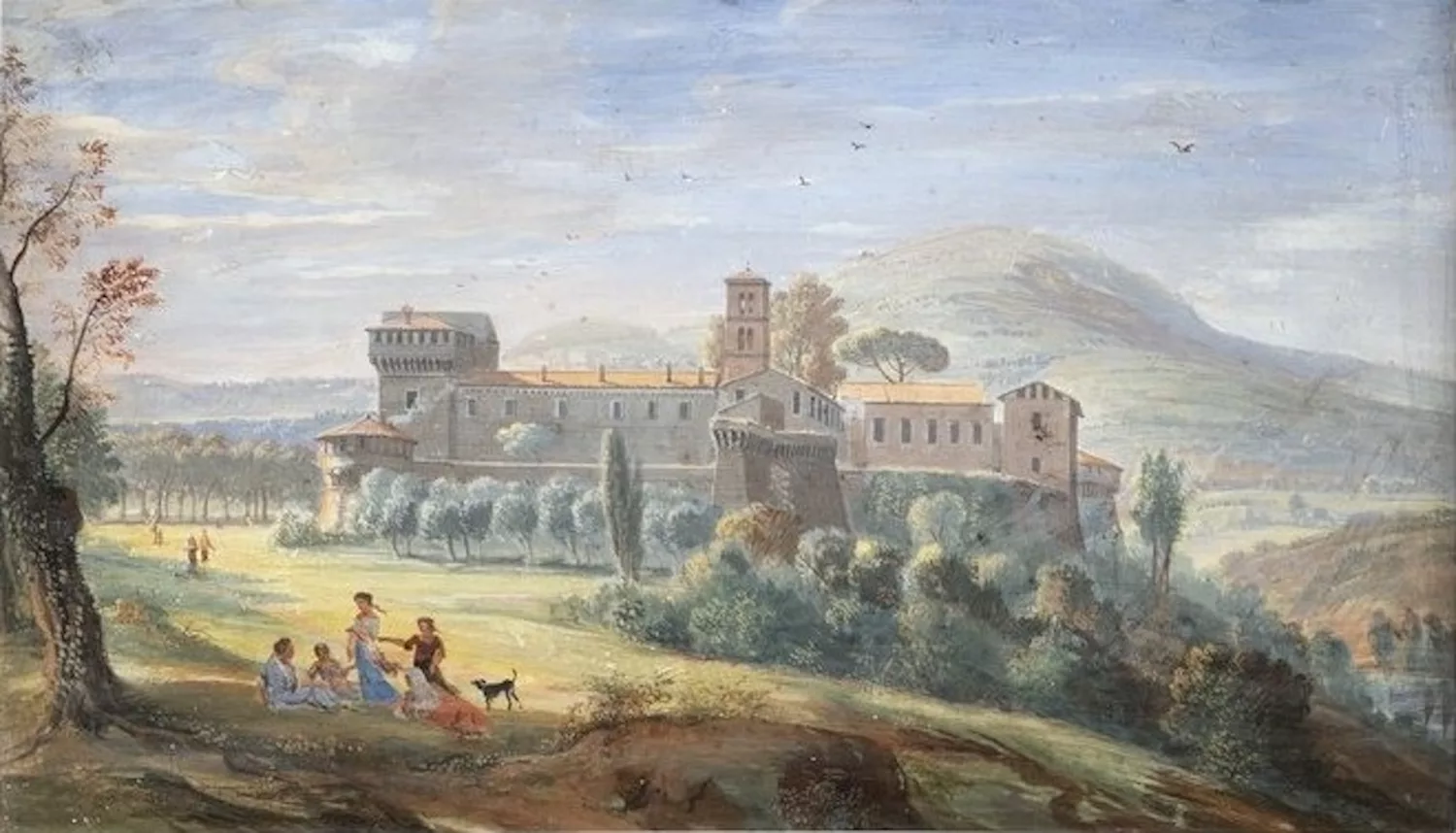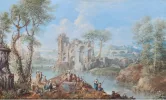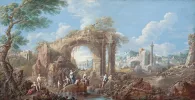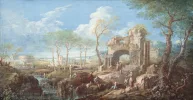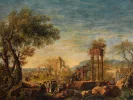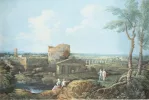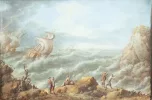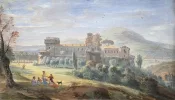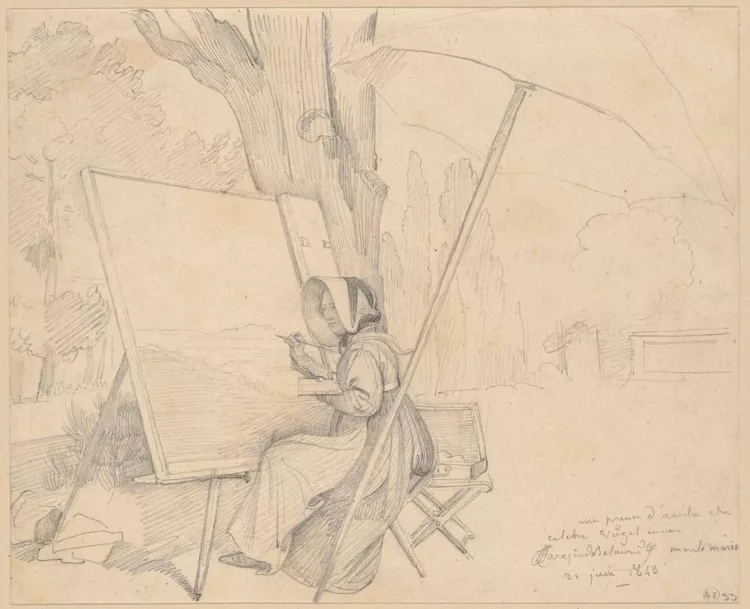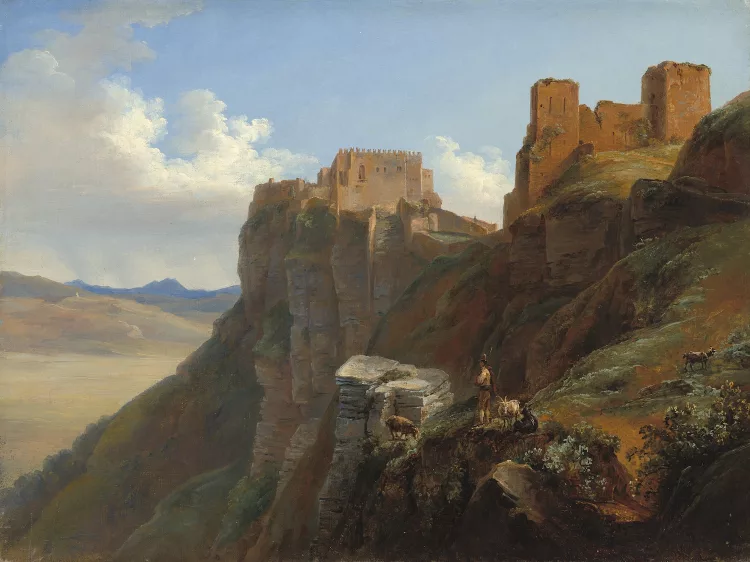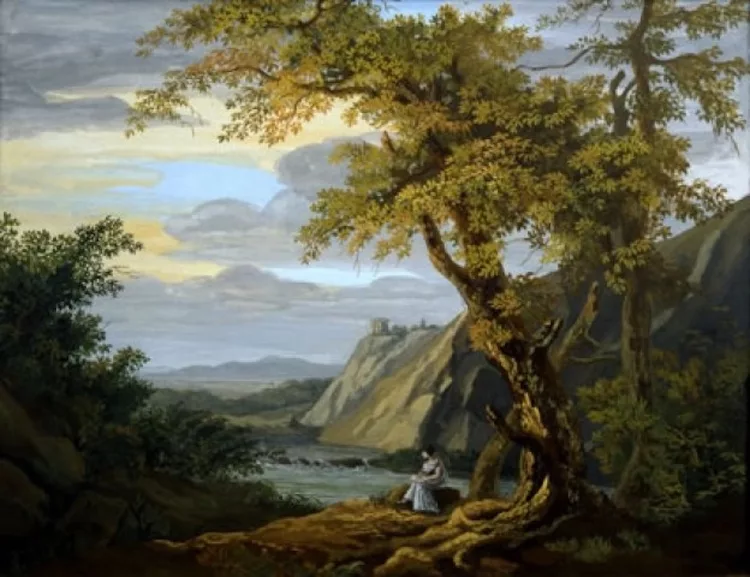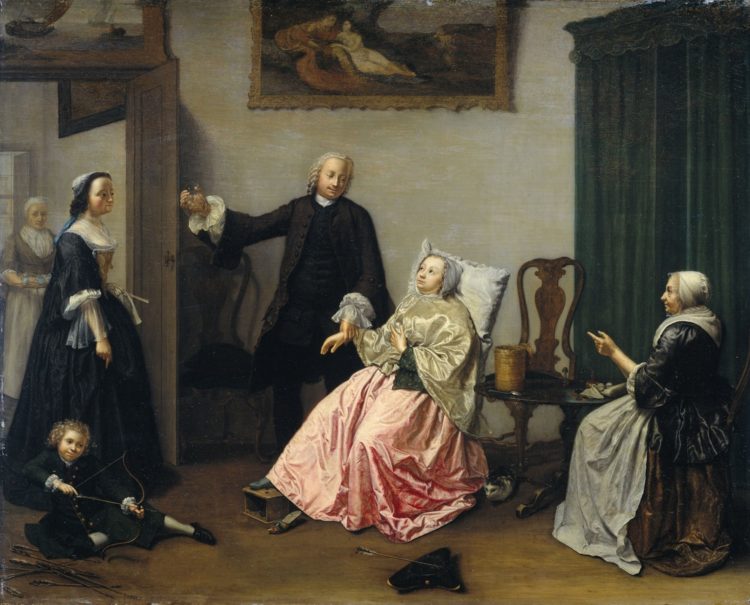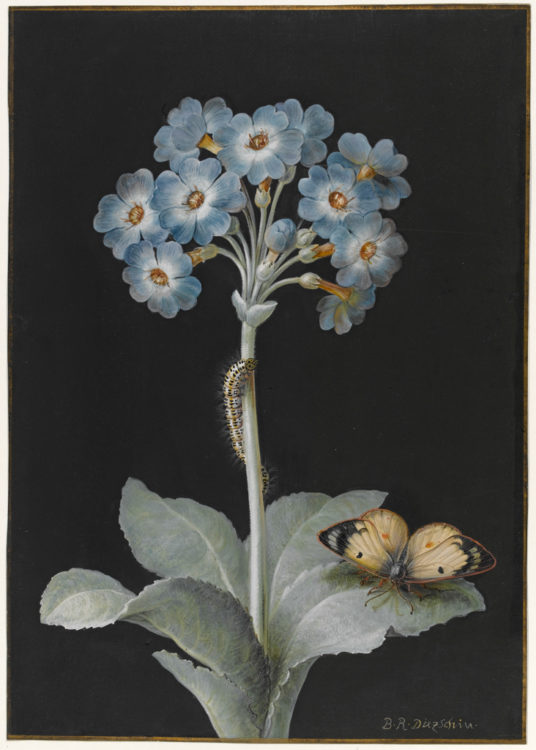Maria Luigia Raggi
Gesino, Antonio, Maria Luigia Raggi. Aggraziata pittrice settecentesca. Un inedito e alcune considerazioni, Orbassano, Camandona, 2006
→Guarino, Sergio, “Maria Luigia Raggi (Maestro dei Capricci di Prato)”, in Guarino, Sergio – Masini, Patrizia (eds.), Pinacoteca Capitolina. Catalogo generale, Milan, Electa, 2006, p. 488–491
→Lollobrigida, Consuelo, Maria Luigia Raggi. Il Capriccio Paesaggistico tra Arcadia e Grand Tour, Rome, Budai, 2012
Roma pittrice, Museo di Roma, Palazzo Braschi, Rome, 24 October 2024–4 March 2025
Italian landscape painter.
Maria Luigia Raggi, born Battina Maria Ignazia, is now being recognised as the first known woman landscape artist in Italian art history. She was born in Genoa to the prominent Raggi family and baptised on 15 February 1742 in the parish of San Marcellino. Her father was Marquis Giovan Antonio, and her mother, Maria Brignole Sale, was the sister of Gian Francesco Maria, who served as Doge of Genoa from 1746 to 1748.
At the age of nine, Maria Luigia was sent to the convent school of the Incarnazione in Genoa, where she later took religious vows, probably under family pressure. Despite the restrictions of monastic life, she devoted herself entirely to painting, a skill she learned under the guidance of Maria Castello, who also served as the private governess to M. L. Raggi’s sister Isabellina. Under Castello’s guidance, M. L. Raggi developed a strong foundation in landscape painting – a genre still regarded as unconventional for women artists in the 18th century.
The rediscovery of four landscape paintings featuring ruins, signed “Maria Luisa Raggi” or initialled “mlr” and “l. raggi,” has been crucial in attributing a substantial body of work to M. L. Raggi. These works led scholars to identify her as the previously anonymous “Master of the Prato Capricci” – also known in earlier studies as the “Eighteenth-Century Landscape Painter of Roman Ruins” or “Pseudo-Anesi”. As a result, several paintings in the Musei Capitolini, a significant collection in the Musei Civici of Prato and various works held in private collections or circulating in the art market have now been attributed to her.
Between 1781 and 1783, M. L. Raggi was active in Rome, residing in Palazzo Raggi al Corso – a property owned by her uncle Ferdinando Raggi, a respected intellectual, artist and architect who became president of the Accademia di San Luca in 1781. During this Roman period, she produced several capricci and imaginative landscapes, including two works now in the Accademia di San Luca, which were probably created as reception pieces during her uncle’s presidency. Four additional works, now in the Musei Capitolini, were previously part of the collection of the Castellani family – the renowned Roman goldsmiths and collectors whose shop neighboured M. L. Raggi’s residence in the now-demolished Vicolo Cacciabove, within the Palazzo Raggi complex. During this period, she also painted a rare View of the Colosseumon a fan-shaped support, now part of the Parco Archeologico del Colosseo collection acquired in 2021.
By 1783, she was back in Genoa, where documentation confirms that Ferdinando continued to support her financially, possibly with proceeds from works sold in Rome to Grand Tour collectors. She died on 25 March 1823, and was buried in the convent cemetery of the Incarnazione. Her tomb was destroyed during the Second World War bombings of Genoa, but her legacy, long obscured, is now regaining its rightful place in the history of landscape painting.
A biography produced as part of the programme “Reilluminating the Age of Enlightenment: Women Artists of 18th Century”
© Archives of Women Artists, Research and Exhibitions, 2025



